-

The Moyer Judicial Center identifies the city of Columbus. It’s even the backdrop for many local newscasts. This popular view of downtown from across the Scioto River captures the 14-story building in the foreground of notable city skyscrapers – the 32-story Vern Riffe Center for the Government and the Arts (green-topped building on the right), the Huntington Center (center), and the historic LeVeque Tower (to the left), completed in 1927.
-
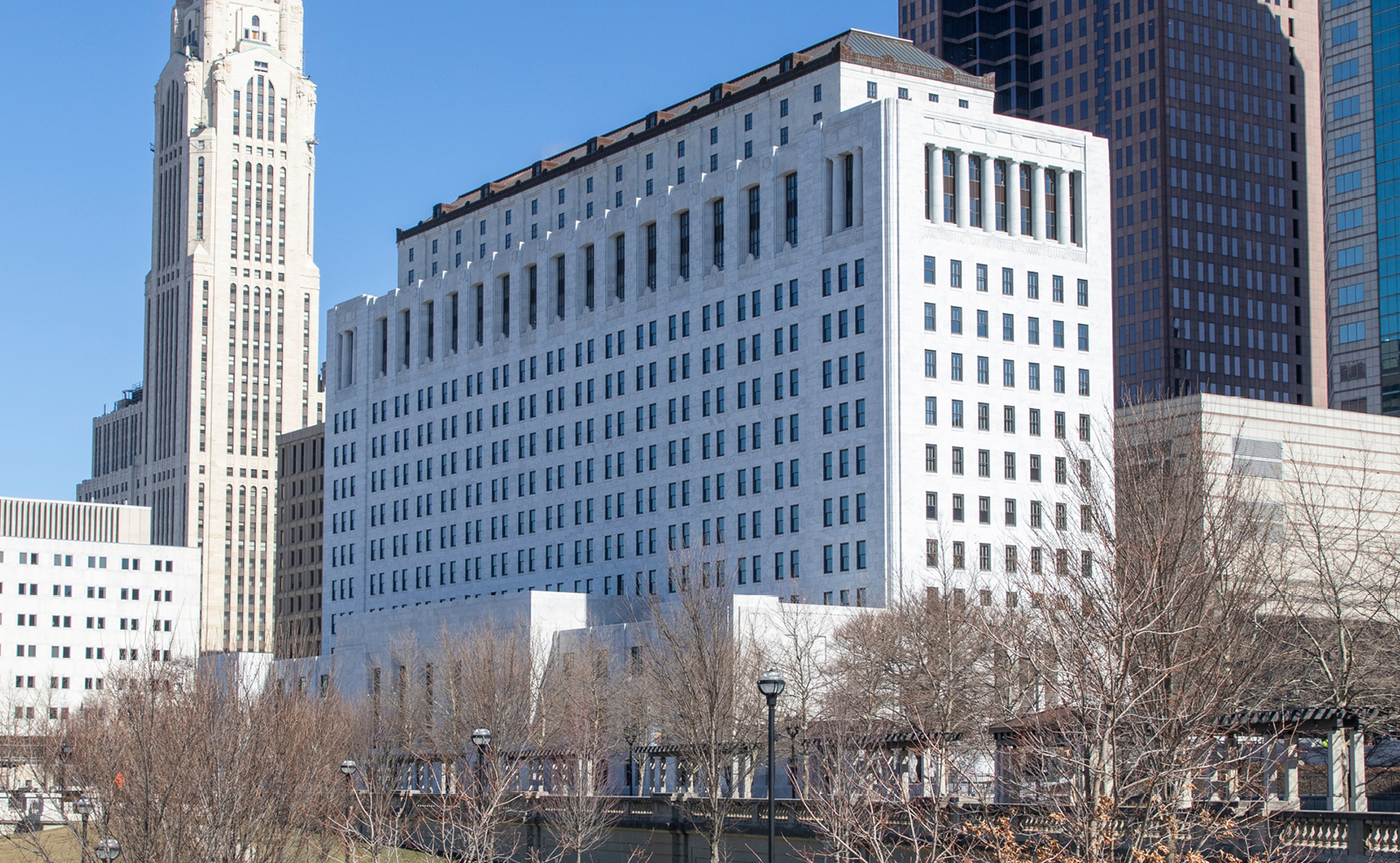
The regal structure, completed in 1933 and called the State Office Building or State Departments Building, reflected three purposes through its design. The lower stories, which jut out from the main core, indicated public hearing rooms and meeting spaces. The elegant center of the building was designated as the office spaces. And sitting atop that section was the State Library, which is hinted at first with its taller, extended windows. The upper floors were set back from the main building, representing a “crowning motif,” according to a Supreme Court of Ohio book about the building. As you move closer to the building, now the Supreme Court's home, there is so much more to take in.
-
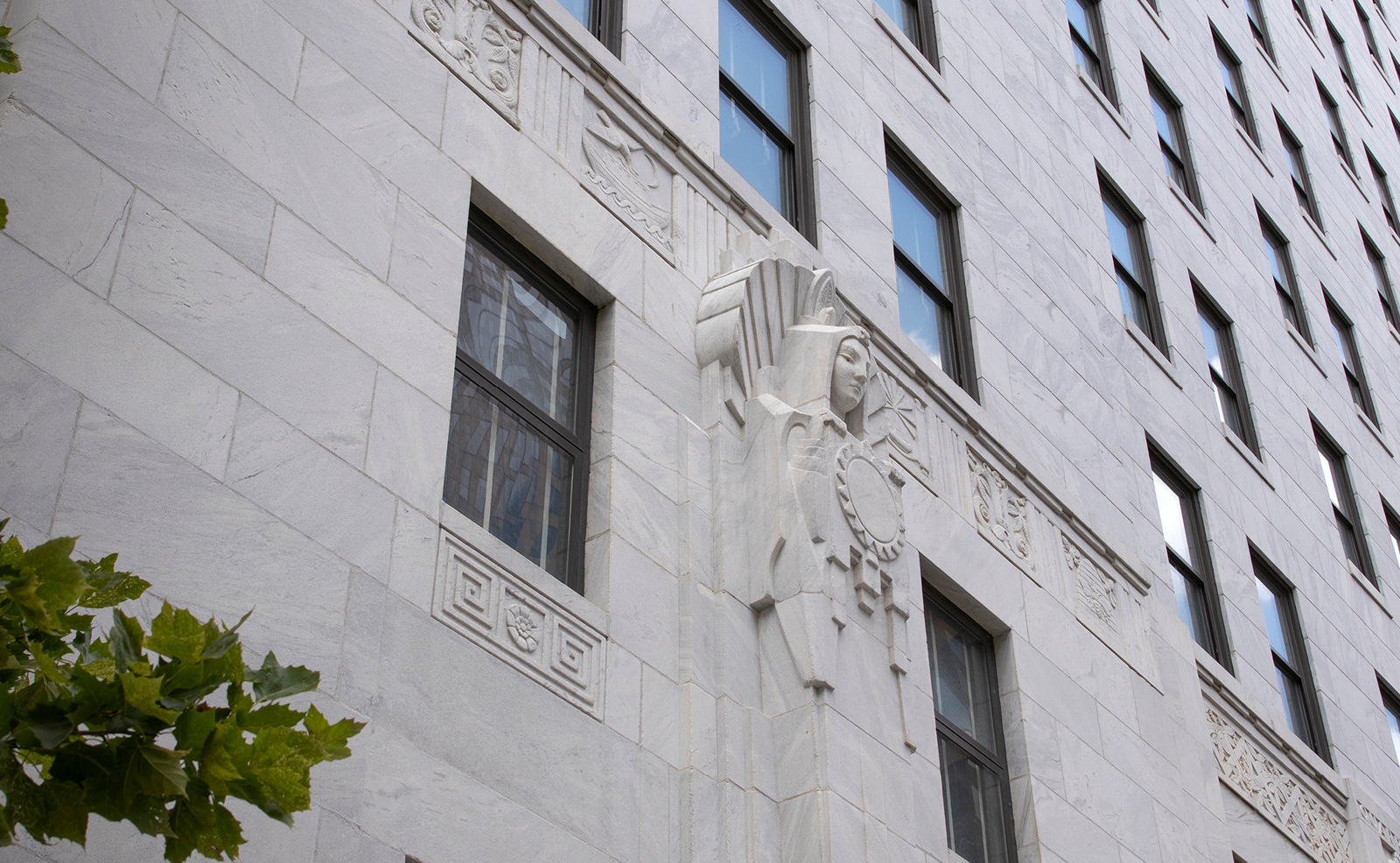
Two figures stand tall at each end of the judicial center on its east side. At the south end (pictured) stands a sculpture who appears to hold a sun. She symbolizes Ohio’s “spiritual and intellectual forces.” To the north stands a mythical-looking marble person displaying a gear to represent Ohio’s “material and physical resources” – such as farming and industry.
-
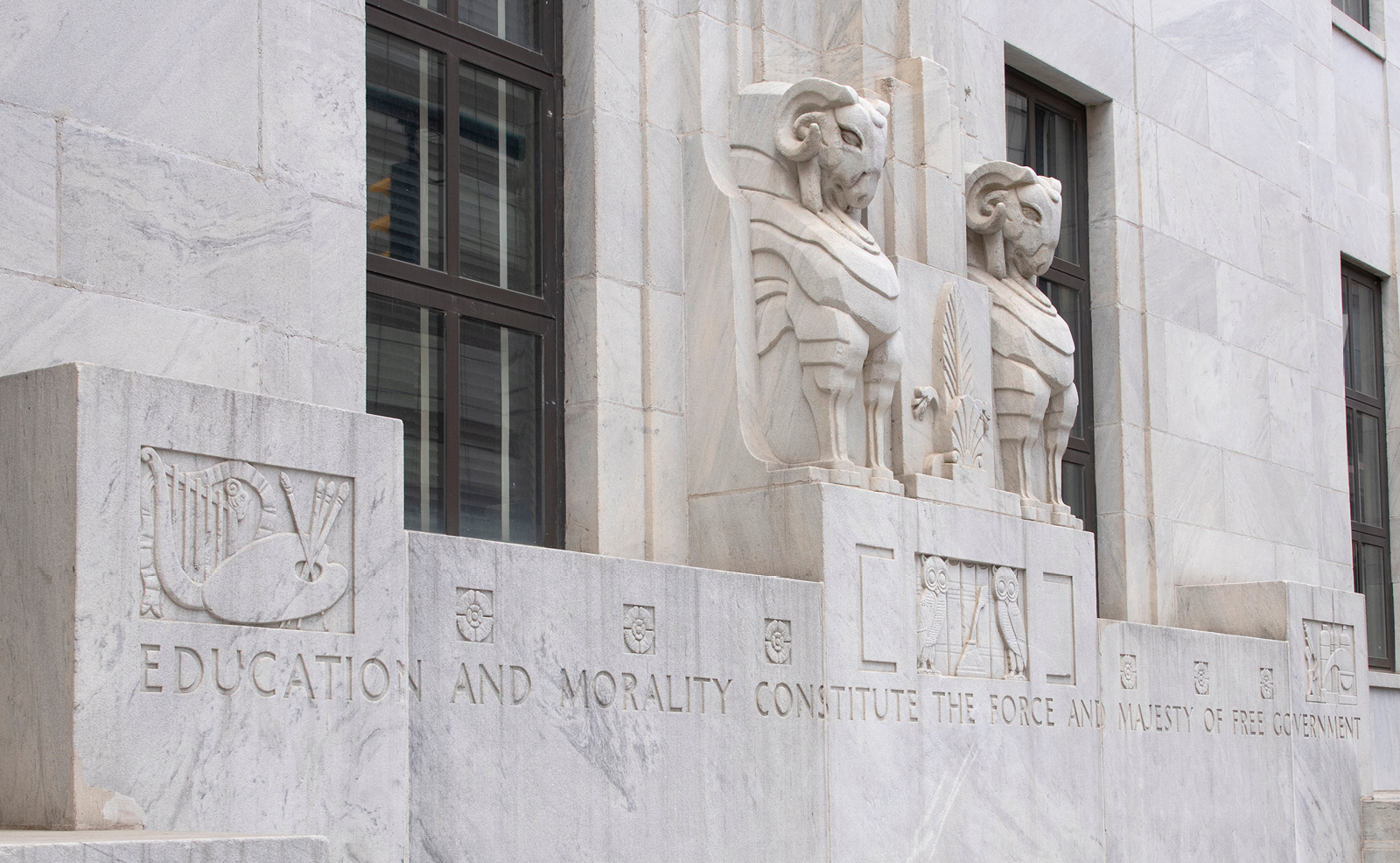
Near the south sculpture’s base, you’ll see three carvings. The first shows an artist’s palette, brushes, and a musical instrument. These stand for the arts. In the center, two owls perch in front of books and aside a quill to represent education. And the third panel depicts bottles and a microscope to indicate the sciences. The quote reads, “Education and morality constitute the force and majesty of free government.”
-
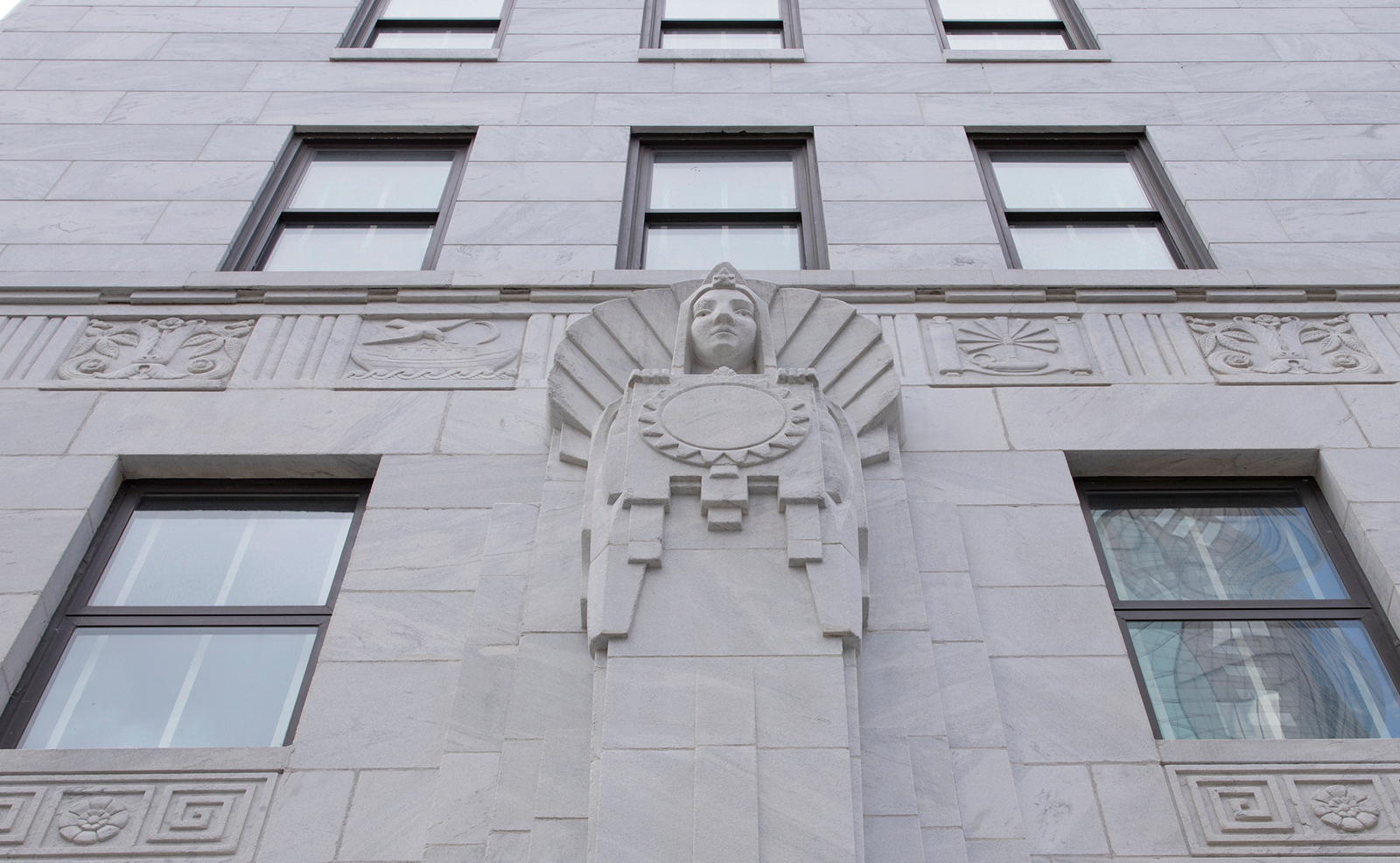
Near the head of each figure, between the second and third floor windows, are a set of six more carved panels. Pictured (from left) are decorative leaves, a dove above a ship, an oil lamp with rays of light, and more decorative leaves. Building documents indicate that the dove refers to religion and the oil lamp symbolizes education. Alongside these carvings, outside of the frame, are a carving of fire, representing home, and one with bees and a hive, symbolizing industry.
-

Larger panels, etched across the full length of the building on the same side, were described recently by a Court employee as “hidden gems.” These 14 intricate carvings portray Ohio industries. Represented are quarrying, fishing, petroleum, ceramics, fruit culture, aeronautics, transportation, manufacturing, construction, agriculture, mining, livestock (pictured left), printing (pictured right), and founding.
-
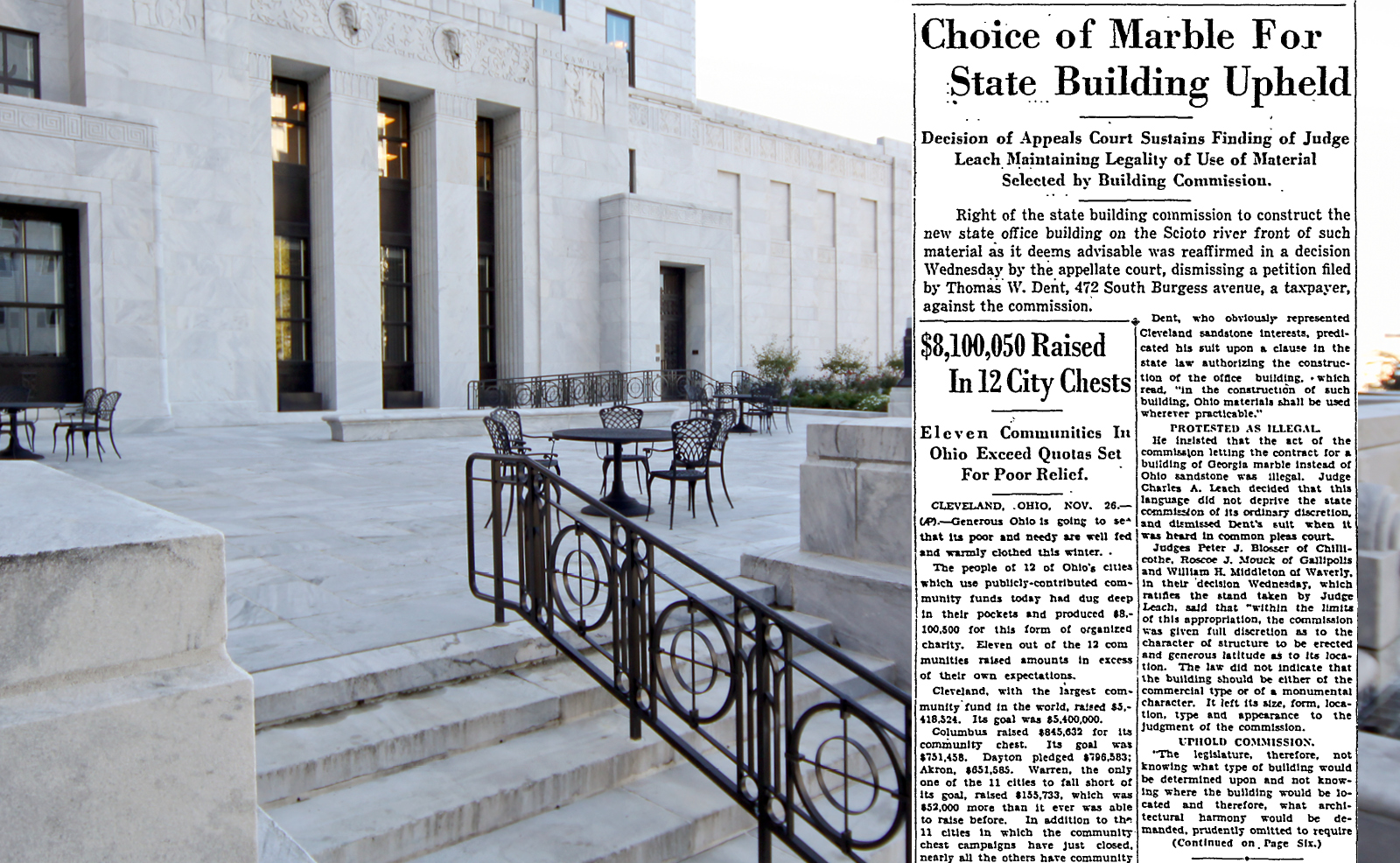
While walking around the Court’s exterior, the building’s white surface stands out. The smooth, distinctive material is marble from Georgia. That choice landed the state of Ohio in court. A taxpayer connected to a Cleveland sandstone company sued, arguing the plan to use Georgia marble should be halted because the building must be constructed with Ohio materials. The trial and appellate courts disagreed and concluded that Ohio materials weren’t mandated in the law that authorized the construction. The courts found the commission overseeing the project “was given full discretion as to the character of the building” and could choose materials that best suited the design ideals.
-

Like the east side of the Moyer Judicial Center, the west façade is decorated with a series of large carvings running much of the length of the building. These have prompted a question from one keen observer: “Why is there a squirrel?” The squirrel represents vision. That’s one of six attributes of good citizenship displayed in these carvings. The others are loyalty, service, devotion, wisdom, and integrity. The carvings show open hands for service, and an owl with outstretched wings for wisdom, for example.
-
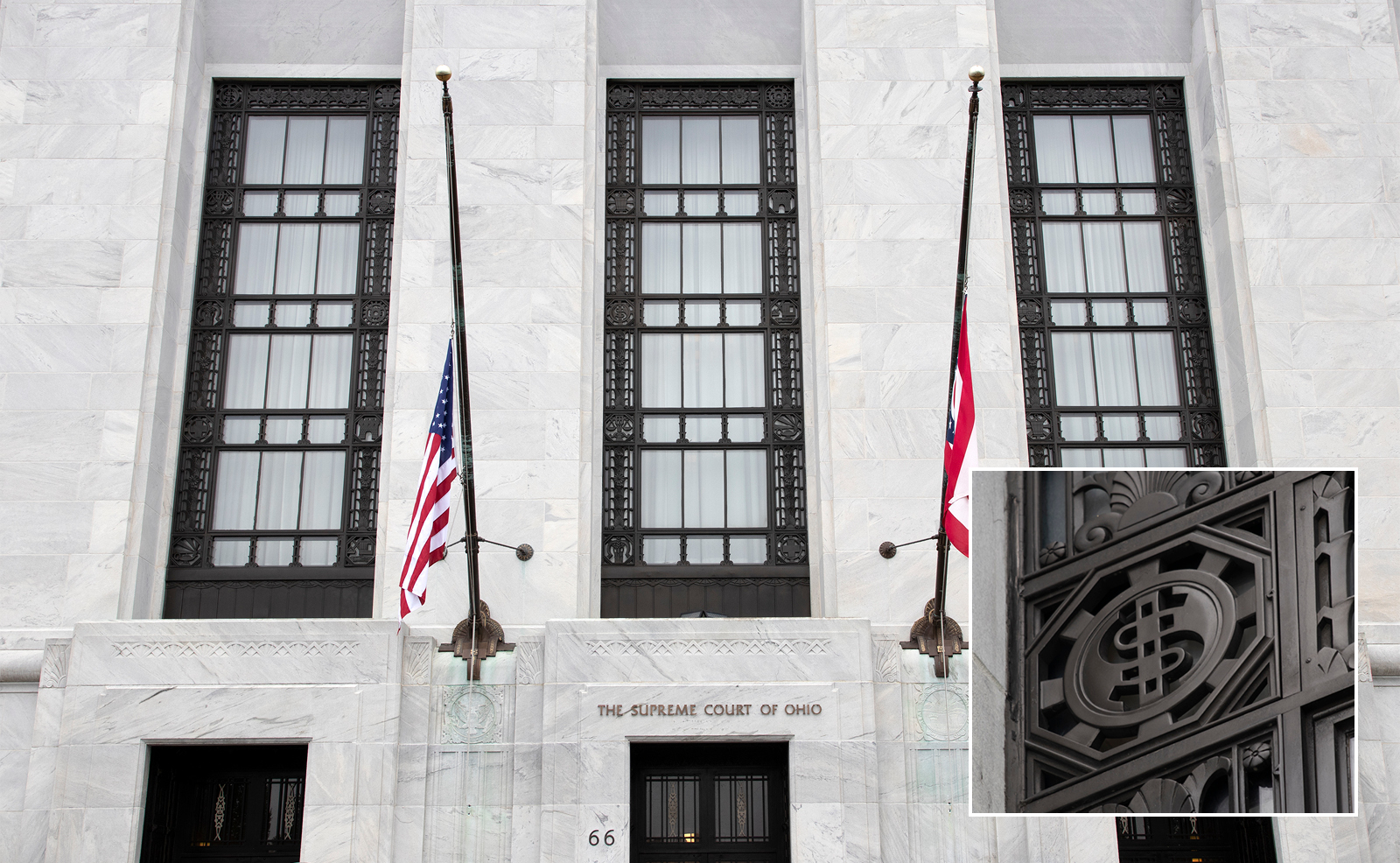
Gazing upward at the building on this side, note the attention to detail in the metal grill work surrounding the windows. So many design elements throughout the building reflect meticulous concern about small details that might have otherwise been presented as mundane, functional features. There’s a dollar sign (inset), a lamp of knowledge, the scales of justice, a steam shovel, and more. Because many of these items don’t appear elsewhere on the building, the Court civic education staff theorize that they might symbolize the executive branch agency offices – such as commerce, education, attorney general, and transportation.
-
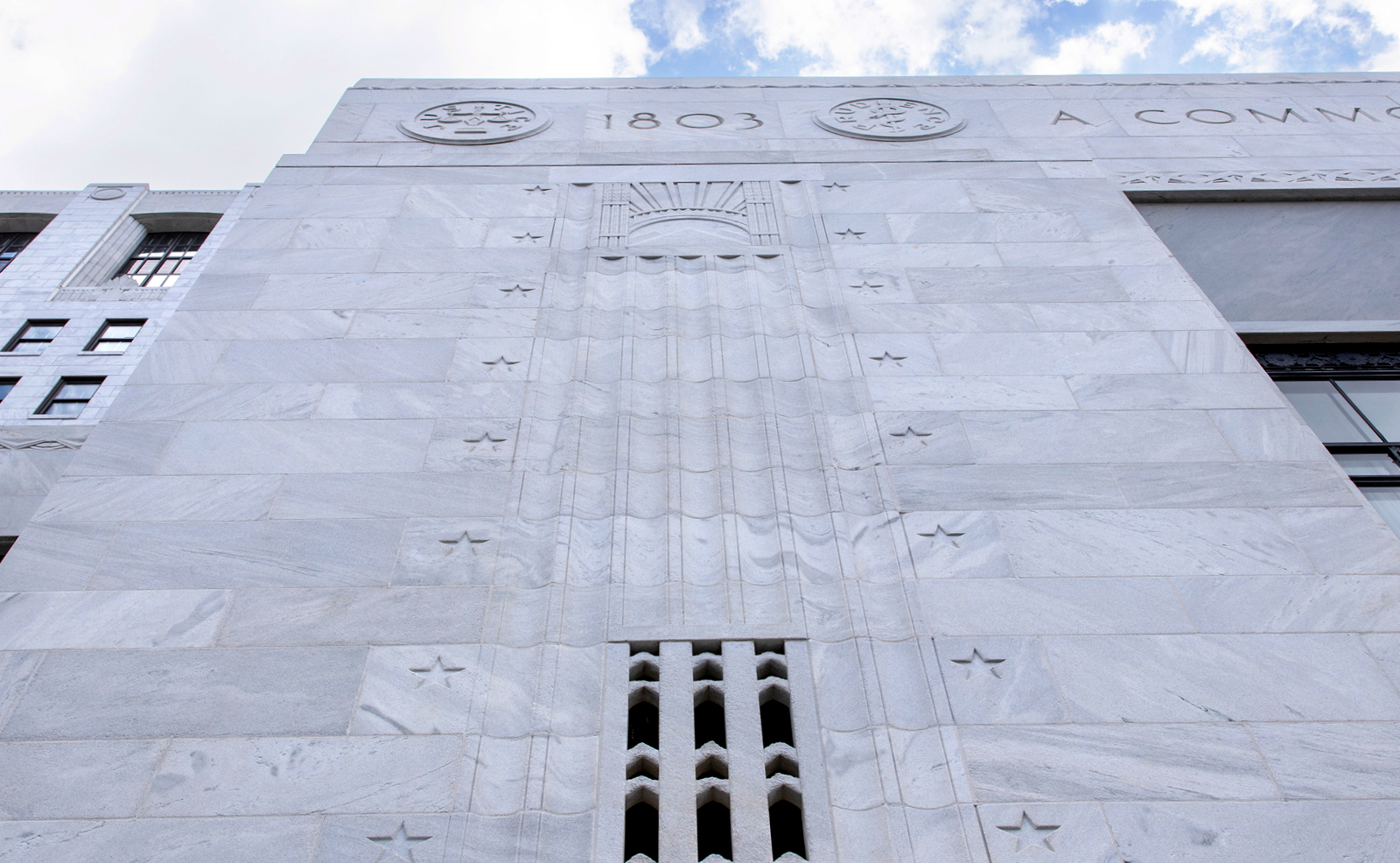
Alongside the doorways to enter on this side are vertical column-looking sections that are “fluted,” meaning grooves or channels are cut into the marble. They rise up to a year engraved at the top. Shown here is “1803,” which is the year Ohio gained statehood. Next to the fluted sections are 16 engraved stars, which represent each of the states in the United States at the time Ohio became a state.
-
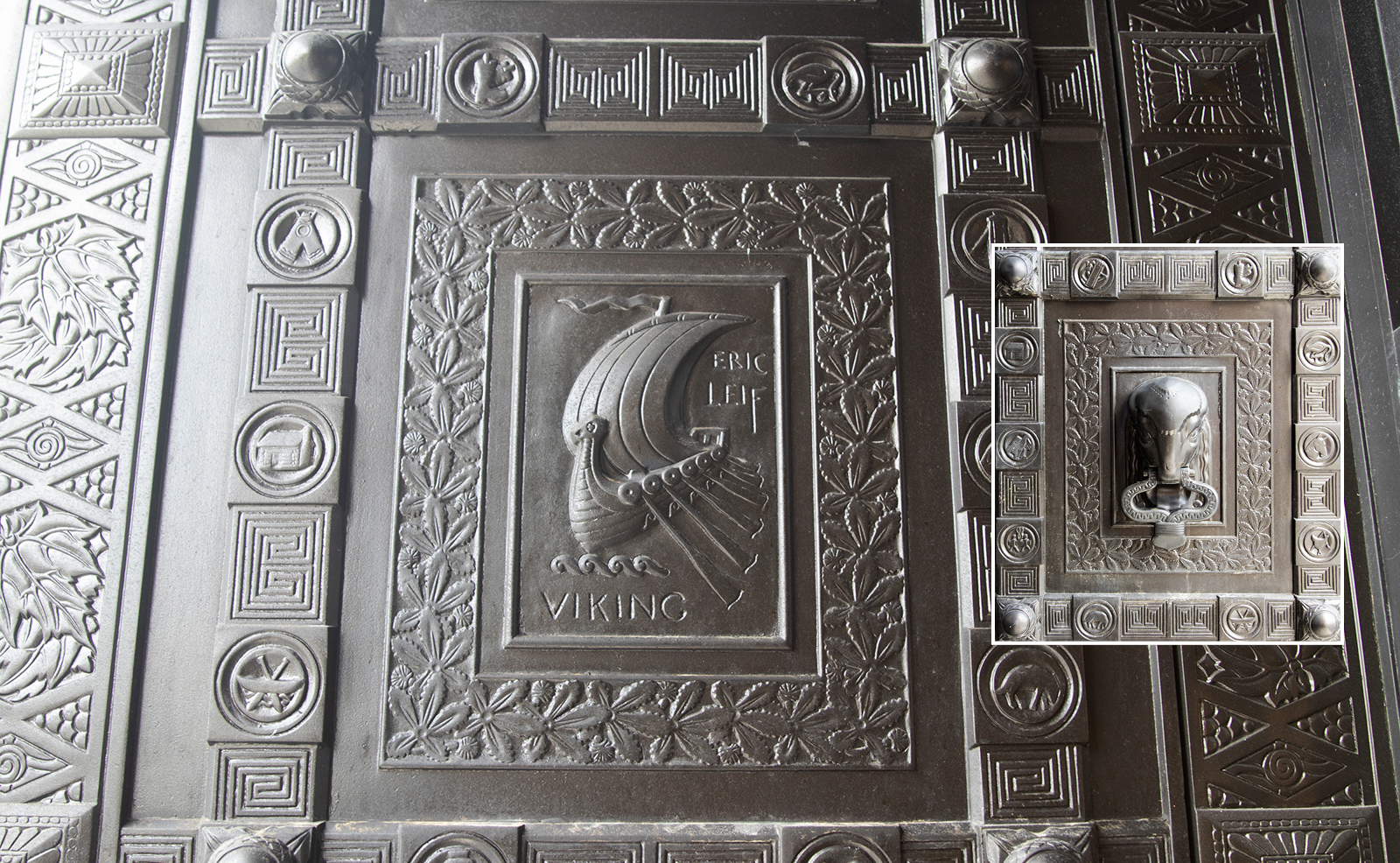
The central doors going into the building on this side are 2,000-pound structures. There are three sets of doors, composed of bronze, that trace numerous historical moments from early American history to the times closer to the building’s construction. For example, carvings etched into the metal depict the arrival of Europeans to the shores of the continent – such as this Viking ship with the name “Eric Leif,” referring to Leif Ericson (sometimes, Erikson), thought to be the first European to land in North America. The handle for each of these doors is cast to look like a buffalo head (inset).
-

Periodically around the building are depictions of moments related to battles, treaties, and trade. This one represents the pioneers of the Northwest Territory, marking European settlers’ move westward. Campus Martius (left) housed and protected settlers in Marietta, the first permanent American settlement in the territory. Fort Washington (right) was built in the area that became Cincinnati. Also memorialized on the building are Ohioans who served in the War of 1812, the Mexican War, the Spanish American War, and World War I.
-

The main entrance to the building on the east side is recessed within the structure. When stepping into the entry area before going inside, you encounter barrel-vaulted ceilings decorated with three panels of mosaic pieces. These tiles, especially the gold and silver ones, were slightly tilted to add texture and sparkle.
-

At one corner of the building, a ceremony was held to lay a cornerstone on April 25, 1931. Among the historic time-capsule materials placed in the cornerstone: Ohio and U.S. flags; legislative documents providing for the building’s construction; biographies of the five building commission members, two governors, and the architects; the ceremony invitation and program; and copies of Ohio’s newspapers.
-
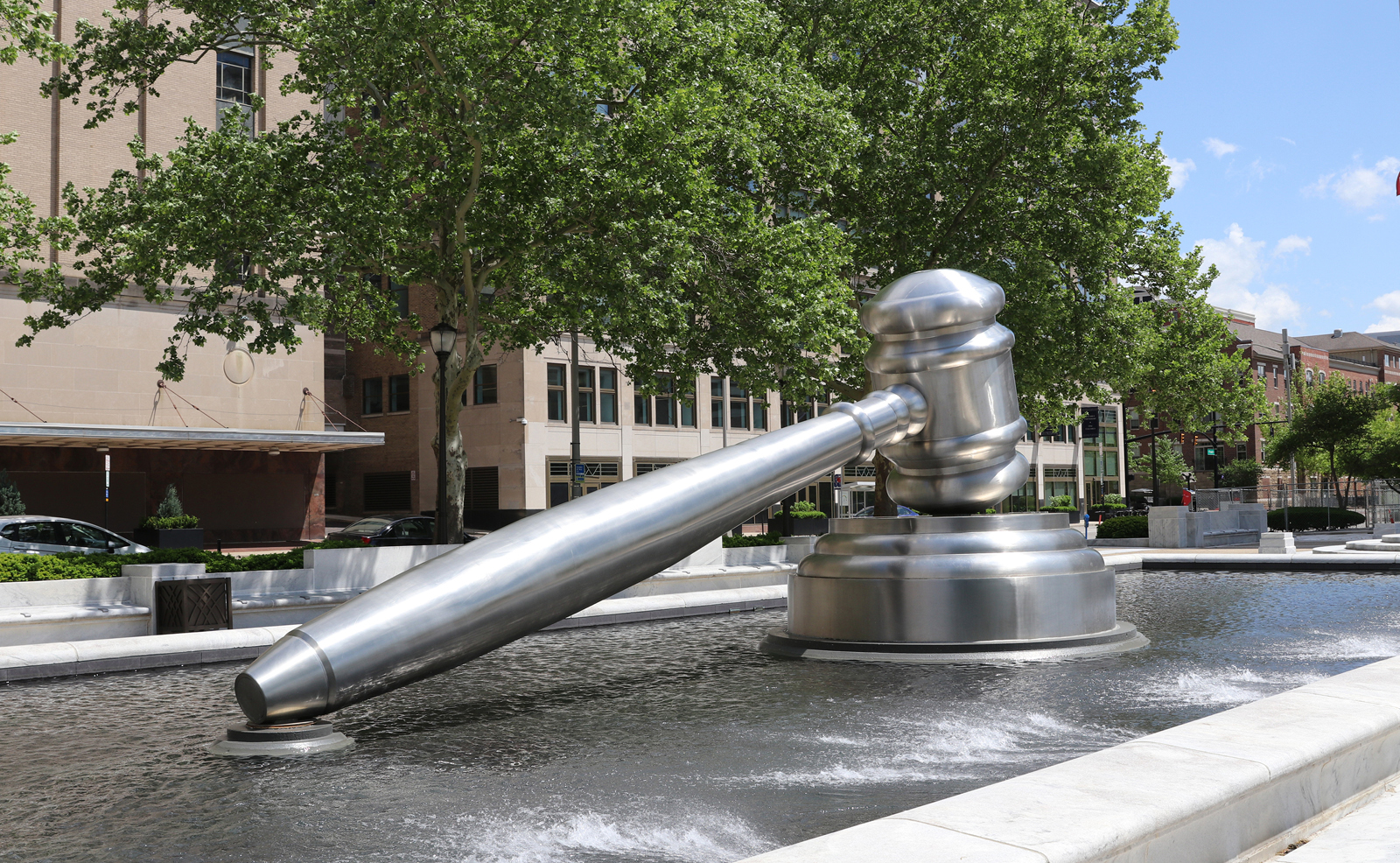
No story about the gorgeous exterior of the Supreme Court could end without mention of one of its most iconic and recognizable features – the gavel. The stainless steel sculpture was installed in 2008, and local news media routinely report live from in front of the gavel about any court or legal happenings. It’s also a favorite spot for new lawyers wanting to capture the moment after being sworn into the practice of law, and for graduation shots in general. And it’s a lovely location to relax for lunch on the plaza. (Sculptor: Andrew F. Scott)















